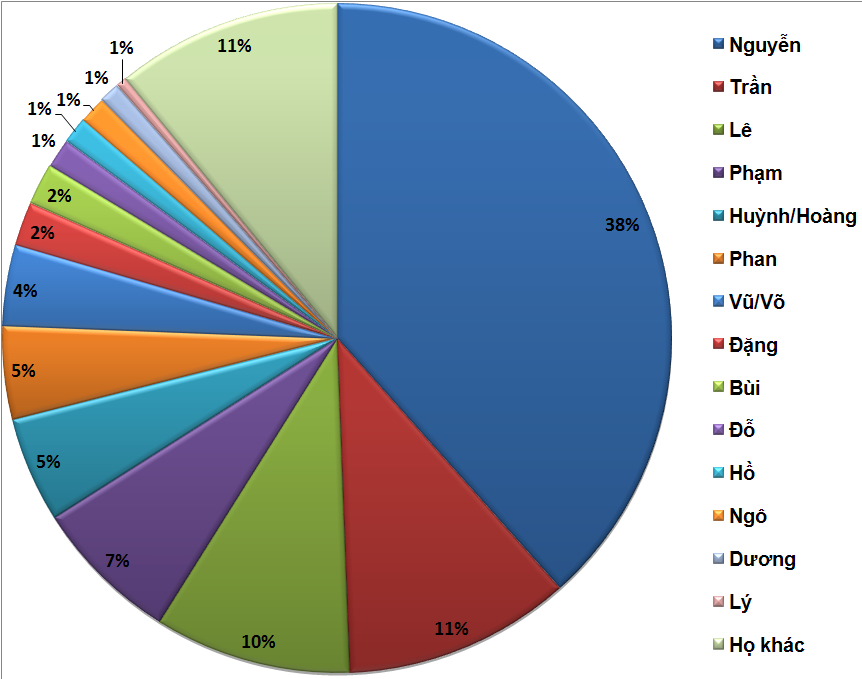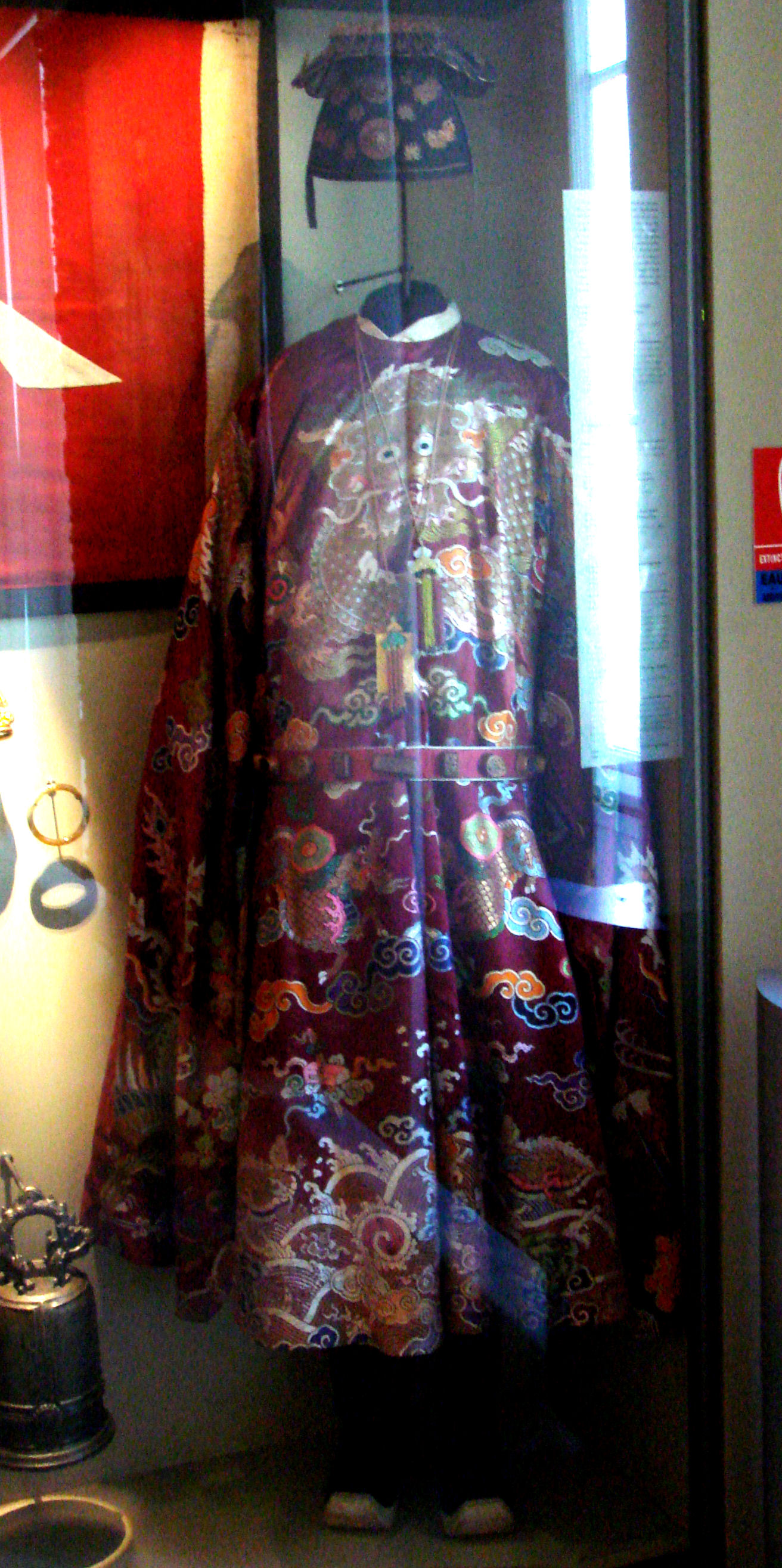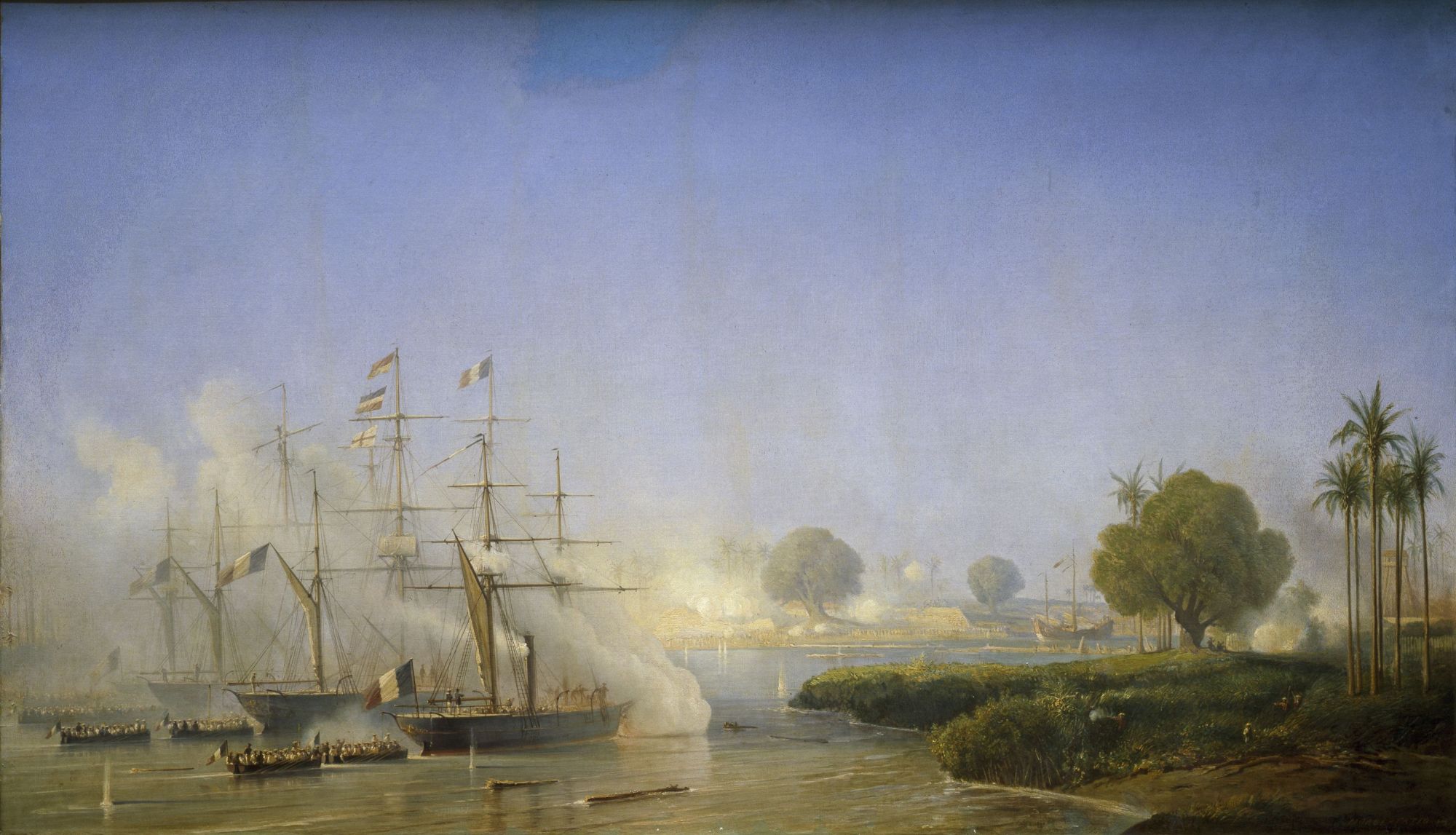|
Nguyễn Tri Phương
Nguyễn Tri Phương ( vi-hantu, 阮知方, 1800 – 1873), born Nguyễn Văn Chương, was a Nguyễn dynasty mandarin and military commander. He commanded armies against French conquest of Vietnam at the Siege of Tourane, the Siege of Saigon and the Battle of Hanoi (1873). Early years Nguyễn Tri Phương was born in 1800 in Ðường Long village, Chánh Lộc canton, Phong Ðiền district, Thừa Thiên fu, now is Chí Long village, Phong Chương commune, Phong Ðiền district, Thừa Thiên Huế. Born in a peasant family, Nguyễn did not go to school, but with intelligence, high self-study and self-reliance, he made a great career. Starting from an official at the district level, due to his talent, he was promoted to the court, was recruited and in turn held many important positions during the three reigns of Minh Mạng, Thiệu Trị, and Tự Đức. Phương had risen quickly in military ranks after recapturing Hà Tiên and defeating the Siamese army at C ... [...More Info...] [...Related Items...] OR: [Wikipedia] [Google] [Baidu] |
Nguyễn Dynasty
The Nguyễn dynasty (chữ Nôm: 茹阮, vi, Nhà Nguyễn; chữ Hán: 阮朝, vi, Nguyễn triều) was the last Vietnamese dynasty, which ruled the unified Vietnamese state largely independently from 1802 to 1883. During its existence, the empire expanded into modern-day southern Vietnam, Cambodia, and Laos through a continuation of the centuries-long Nam tiến and Siamese–Vietnamese wars. After 1883, the Nguyễn emperors ruled nominally as heads of state of the French protectorates of Annam and Tonkin until the final months of WWII; they later nominally ruled over the Empire of Vietnam until the August Revolution. The House of Nguyễn Phúc, Nguyễn Phúc family established feudal rule over large amounts of territory as the Nguyễn lords by the 16th century before defeating the Tây Sơn dynasty and establishing their own imperial rule in the 19th century. The dynastic rule began with Gia Long ascending the throne in 1802, after ending the previous Tây Sơn d ... [...More Info...] [...Related Items...] OR: [Wikipedia] [Google] [Baidu] |
Siamese–Vietnamese War (1841–1845)
The Siamese–Vietnamese War of 1841–1845 ( th, อานามสยามยุทธ (พ.ศ. 2384 – พ.ศ. 2388), vi, Chiến tranh Việt–Xiêm (1841–1845)) was a military conflict between the Đại Nam, ruled by Emperor Thiệu Trị, and the Kingdom of Siam, under the rule of Chakkri King Nangklao. The rivalry between Vietnam and Siam over the control of the Cambodian heartlands in the Lower Mekong basin had intensified after Siam had attempted to conquer Cambodia during the previous Siamese–Vietnamese War (1831–1834). Vietnamese Emperor Minh Mạng installed Princess Ang Mey to rule Cambodia as a puppet queen regnant of his choice in 1834 and declared full suzerainty over Cambodia, which he demoted to Vietnam's 32nd province, the ''Western Commandery'' ( Tây Thành Province). In 1841, Siam seized the opportunity of discontent to aid the Khmer revolt against Vietnamese rule. King Rama III sent an army to enforce Prince Ang Duong's installation as Kin ... [...More Info...] [...Related Items...] OR: [Wikipedia] [Google] [Baidu] |
Nguyen Dynasty Officials
Nguyễn () is the most common Vietnamese surname. Outside of Vietnam, the surname is commonly rendered without diacritics as Nguyen. Nguyên (元)is a different word and surname. By some estimates 39 percent of Vietnamese people bear this surname.Lê Trung Hoa, ''Họ và tên người Việt Nam'', NXB Khoa học - Xã hội, 2005 Origin and usage "Nguyễn" is the spelling of the Sino-Vietnamese pronunciation of the Han character 阮 (, ). The same Han character is often romanized as ''Ruǎn'' in Mandarin, ''Yuen'' in Cantonese, ''Gnieuh'' or ''Nyoe¹'' in Wu Chinese, or ''Nguang'' in Fuzhou dialect, Hokchew. . Hanja reading ( Korean language, Korean) is 완 (''Wan'') or 원 (''Won'') and in Hiragana, it is げん (''Gen''), old reading as け゚ん (Ngen). The first recorded mention of a person surnamed Nguyen is a 317 CE description of a journey to Giao Châu undertaken by Eastern Jin dynasty (, ) officer and his family. Many events in Vietnamese history have contribu ... [...More Info...] [...Related Items...] OR: [Wikipedia] [Google] [Baidu] |
People From Thừa Thiên-Huế Province
A person ( : people) is a being that has certain capacities or attributes such as reason, morality, consciousness or self-consciousness, and being a part of a culturally established form of social relations such as kinship, ownership of property, or legal responsibility. The defining features of personhood and, consequently, what makes a person count as a person, differ widely among cultures and contexts. In addition to the question of personhood, of what makes a being count as a person to begin with, there are further questions about personal identity and self: both about what makes any particular person that particular person instead of another, and about what makes a person at one time the same person as they were or will be at another time despite any intervening changes. The plural form "people" is often used to refer to an entire nation or ethnic group (as in "a people"), and this was the original meaning of the word; it subsequently acquired its use as a plural form of per ... [...More Info...] [...Related Items...] OR: [Wikipedia] [Google] [Baidu] |
1873 Deaths
Events January–March * January 1 ** Japan adopts the Gregorian calendar. ** The California Penal Code goes into effect. * January 17 – American Indian Wars: Modoc War: First Battle of the Stronghold – Modoc Indians defeat the United States Army. * February 11 – The Spanish Cortes deposes King Amadeus I, and proclaims the First Spanish Republic. * February 12 ** Emilio Castelar, the former foreign minister, becomes prime minister of the new Spanish Republic. ** The Coinage Act of 1873 in the United States is signed into law by President Ulysses S. Grant; coming into effect on April 1, it ends bimetallism in the U.S., and places the country on the gold standard. * February 20 ** The University of California opens its first medical school in San Francisco. ** British naval officer John Moresby discovers the site of Port Moresby, and claims the land for Britain. * March 3 – Censorship: The United States Congress enacts the Comstock Law, making it ... [...More Info...] [...Related Items...] OR: [Wikipedia] [Google] [Baidu] |
1800 Births
Eighteen or 18 may refer to: * 18 (number), the natural number following 17 and preceding 19 * one of the years 18 BC, AD 18, 1918, 2018 Film, television and entertainment * 18 (film), ''18'' (film), a 1993 Taiwanese experimental film based on the short story ''God's Dice'' * Eighteen (film), ''Eighteen'' (film), a 2005 Canadian dramatic feature film * 18 (British Board of Film Classification), a film rating in the United Kingdom, also used in Ireland by the Irish Film Classification Office * 18 (Dragon Ball), 18 (''Dragon Ball''), a character in the ''Dragon Ball'' franchise * "Eighteen", a 2006 episode of the animated television series ''12 oz. Mouse'' Music Albums * 18 (Moby album), ''18'' (Moby album), 2002 * 18 (Nana Kitade album), ''18'' (Nana Kitade album), 2005 * ''18...'', 2009 debut album by G.E.M. Songs * 18 (5 Seconds of Summer song), "18" (5 Seconds of Summer song), from their 2014 eponymous debut album * 18 (One Direction song), "18" (One Direction song), from the ... [...More Info...] [...Related Items...] OR: [Wikipedia] [Google] [Baidu] |
Hoàng Diệu
Hoàng Diệu ( chữ Hán: 黃耀, 14 March 1829 – 25 April 1882), born Hoàng Kim Tích (黃金錫), courtesy name Quang Viễn, was a Nguyễn dynasty Governor-general of Hà - Ninh, who suicided after failure in protecting Hà Nội citadel. Early years Hoàng Diệu was born in 1829 in a Confucian family in Xuân Đài village, Diên Phước district, Quảng Nam province (now is Điện Bàn, Quảng Nam). In 1848, he got Cử nhân (舉人 senior bachelor) degree in the Regional Exam (Vietnamese: ''Thi Hương''). In 1853, he got (second rank, under doctorate) title in the National Exam (Vietnamese: ''Thi Hội''). In 1855, he was appointed to Chief of Bồng Sơn district, then Tuy Viễn district in Bình Định province. In 1864, there was a coup attempt of Hồng Tập, a younger cousin of King Tự Đức (also known as Hồng Nhậm). The attempt was early exposed, its top leaders, Hồng Tập and Nguyễn Văn Viện were sentenced to guillotine ... [...More Info...] [...Related Items...] OR: [Wikipedia] [Google] [Baidu] |
Francis Garnier
Marie Joseph François Garnier ( vi, Ngạc Nhi; 25 July 1839 – 21 December 1873) was a French officer, inspector of Indigenous Affairs of Cochinchina and explorer. He eventually became mission leader of the Mekong Exploration Commission in 19th century Southeast Asia. Early career Francis Garnier was born on 25 July 1839 in Saint-Étienne, as the second son of Louis-Alexandre Garnier and Anne Marie Félicité Garnier. In 1855, at 16, he joined the Ecole Navale, much to the dismay of his family who disapproved a military career, deeming it as being dangerous. In early 1860, 20 years old Garnier, then serving as an aspirant on the ''Duperré'' during the Second Opium War, jumped into a stormy sea at night to save the life of a cavalry lieutenant who had fallen overboard. For this act of bravery, Garnier was immediately promoted to ensign and got attached to the staff of Admiral Charner. Under Admiral Charner he fought in the Cochinchina Campaign and notably took part in ... [...More Info...] [...Related Items...] OR: [Wikipedia] [Google] [Baidu] |
Trương Minh Giảng
Trương Minh Giảng ( vi-hantu, 張明講, 1792 – 1841) was a general and official of Vietnam during the Nguyễn dynasty. Early life Trương-Minh Giảng was born in Gia Định (modern Ho Chi Minh City). He came from an important aristocratic family of southern Vietnam, the Trương-Minh family from which also comes the scholar Trương Minh Ký (1855-1900). His father, Trương-Minh Thành was the minister of ceremony (Lễ bộ Thượng thư) of Emperor Gia Long. Giảng passed the triennial exam with the grade of '' hương cống'' in 1819. He became a military mandarin in the service of Emperor Minh-Mang and was appointed major general. Career A rebellion was launched by Lê Văn Khôi in Gia Định in 1833. This was an important revolt in southern Vietnam, Giảng was sent to put down the rebellion together with Tống Phúc Lương, Nguyễn Xuân, Phan Văn Thúy and Trần Văn Năng. Two Siamese generals, Bodindecha and Phra Klang, led troops to attac ... [...More Info...] [...Related Items...] OR: [Wikipedia] [Google] [Baidu] |
Châu Đốc
Châu Đốc is a city in An Giang Province, bordering Cambodia, in the Mekong Delta region of Vietnam. As of 2013, the city had a population of 157,298, and cover an area of . The city is located by the Hậu River (a branch of the Mekong River flowing through Vietnamese territory) and Vĩnh Tế canal. Châu Đốc is situated west of Ho Chi Minh City. It takes about six hours to travel by bus from Ho Chi Minh City. History The territory became Vietnam's around the 17th century. The town is near the picturesque Sam Mountain where the Sam Mountain Lady (Vietnamese: Bà Chúa Xứ Núi Sam) is worshipped. The Sam Mount Lady Ceremony is held every April of lunar calendar (May) every year. Floods caused devastation in the region, the one in late 1938 saw 125,000 hectares of ruined riceland due to floods. In 1957, the town was the site of the Châu Đốc massacre. Climate Châu Đốc has a tropical savanna climate (Köppen ''Aw'') with a lengthy though not extreme wet season ... [...More Info...] [...Related Items...] OR: [Wikipedia] [Google] [Baidu] |
Hà Tiên
Hà Tiên is a Provincial city in Kiên Giang Province, Mekong Delta in Vietnam. Its area is and the population as of 2019 is 81,576. The city borders Cambodia to the west. Hà Tiên is a tourist site of the region thanks to its beaches and landscapes. Etymology The name "Hà Tiên" is derived from the Sino-Vietnamese word: 河 僊 or 河 仙, meaning "river spirit". History A settlement and a port seem to have existed at the site of the present town of Hà Tiên from a very early period. Ptolemy's ''Geography'' identified a town there as ''Akadra'' and that it was the port for the Cambodian district of ''Pithonobaste'' - Banteay Meas, all this being part of the Kingdom of Funan. The local capital of this district, also called Banteay Meas, was not on the coast, but located about a day's journey up the Giang-thành river. The name ''Banteay Meas,'' ( km, បន្ទាយមាស, th, บันทายมาศ; lit: "golden ramparts"), referred to the bamboo fort ... [...More Info...] [...Related Items...] OR: [Wikipedia] [Google] [Baidu] |
French Conquest Of Vietnam
The French conquest of Vietnam (1858–1885) was a long and limited war fought between the Second French Empire, later the French Third Republic and the Vietnamese empire of Đại Nam in the mid-late 19th century. Its end and results were victories for the French as they defeated the Vietnamese and their Chinese allies in 1885, the incorporation of Vietnam, Laos, and Cambodia, and finally established French rules over constituent territories of French Indochina over Mainland Southeast Asia in 1887. A joint Franco-Spanish expedition attacked Da Nang in 1858 and then retreated to invade Saigon. King Tu Duc signed a treaty in June 1862 granting the French sovereignty over three provinces in the South. The French annexed the three southwestern provinces in 1867 to form Cochinchina. Having consolidated their power in Cochinchina, the French conquered the rest of Vietnam through a series of battles in Tonkin, between 1873 and 1886. Tonkin at that time was in a state of near anarchy, d ... [...More Info...] [...Related Items...] OR: [Wikipedia] [Google] [Baidu] |


_1938.jpg)



